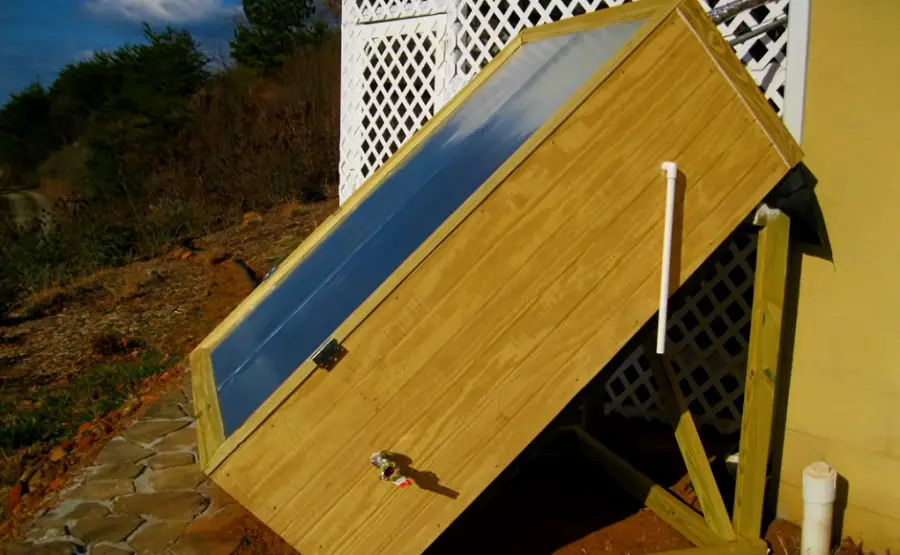| Note: This article may contain affiliate links, which means if you make a purchase following our links won’t cost you extra, but we may earn a commission. Learn more |
Passive solar heating and cooling system is an innovative approach that harnesses the natural energy of the sun to regulate the temperature of a building. This solar passive space heating and cooling system is designed to capture and utilize the energy from the sun to heat or cool the interior of a building.
Passive solar heating refers to using the heat from the sun to warm up the inside of a building. This is done by using materials that can absorb and retain heat, such as concrete, stone, or water. As the sun shines on these materials, they store the heat, which is then released gradually into the building, providing warmth and comfort.
Passive solar cooling, on the other hand, involves using natural cooling techniques such as shading, ventilation, and thermal mass to keep a building cool. This approach eliminates the need for mechanical air conditioning systems, making it an eco-friendly and cost-effective solution.
Passive solar heating examples include designing a building with large windows on the south-facing side to allow maximum sunlight to enter during the winter months. Another example is using insulated concrete walls to absorb and retain heat, reducing the need for additional heating.
Passive solar heating and cooling techniques vary, but all involve using the natural energy of the sun to regulate the temperature of a building.
Define passive solar heating system as a system that utilizes these techniques to capture and utilize solar energy for heating and cooling. This approach is distinct from active solar heating systems, which require mechanical devices to collect and distribute solar energy.
Related Resources: Solar Water Heaters: Type and Works
Passive Solar Air Heating
Passive solar air heating is a sustainable and cost-effective approach to heating buildings. It involves using passive solar air heating panels or collectors that absorb and store heat from the sun, which is then circulated throughout a building to provide warmth.
Passive solar air heating panels come in various forms, including glazed collectors, unglazed collectors, and transpired collectors. Glazed collectors are typically used in colder climates and are made of glass or plastic that traps solar heat, which is then transferred to air circulating inside the collector.
Unglazed collectors, on the other hand, are used in warmer climates and are made of dark metal or plastic, which absorbs solar radiation and transfers heat to the air. Transpired collectors are a newer type of collector that draws air from the building through perforated metal sheets, where it is heated before being returned to the building.

Passive solar air heaters can be purchased or built as a DIY project. Passive solar air heater DIY projects typically involve using readily available materials such as soda cans or plastic bottles to build a simple and effective collector that can be installed on the roof or exterior wall of a building.
Passive solar air heating is an eco-friendly and sustainable way to heat buildings, as it utilizes renewable energy sources and reduces the carbon footprint associated with traditional heating systems.
It is also a cost-effective solution, as the initial investment in passive solar air heating panels can be quickly recouped through energy savings.
How Does a Passive Solar Heating and Cooling System Work?
Passive solar heating and cooling systems work by utilizing the natural energy from the sun to heat or cool buildings without relying on active mechanical systems.
These systems are designed to optimize the energy efficiency of a building while reducing its carbon footprint. Here is a brief overview of how a passive solar heating and cooling system works:
1. Orientation and design: The first step in designing a passive solar heating and cooling system is to orient the building to maximize the amount of sunlight it receives.
The building should be designed with large windows on the south-facing side to allow sunlight to enter and be absorbed by thermal mass materials such as brick, stone, or concrete.
2. Heat absorption: Thermal mass materials absorb the sun’s heat during the day and release it at night when temperatures drop. This helps to keep the building warm even when the sun is not shining. In the summer, the windows can be shaded to prevent excess heat gain and keep the building cool.
3. Ventilation: Passive solar heating and cooling systems also utilize natural ventilation to regulate the temperature of the building. This is achieved by strategically placing windows and vents to allow for the circulation of air.
In the summer, windows can be opened to allow cool air in and warm air out, while in the winter, windows can be closed to retain heat.
4. Insulation: Another important factor in passive solar heating and cooling systems is insulation. By insulating the building properly, it is possible to reduce heat loss in the winter and prevent excess heat gain in the summer. This helps to maintain a comfortable temperature inside the building year-round.

Passive Solar Heating Examples
Passive solar heating is a popular method of harnessing the sun’s energy to heat homes and buildings. Some common examples of passive solar heating include:
1. Direct Gain
Direct gain systems use south-facing windows to collect sunlight and heat the building’s interior. Thermal mass materials such as brick or concrete absorb and store the sun’s heat, releasing it slowly into the building as the temperature drops.
2. Trombe Walls
Trombe walls are thick masonry walls that are painted black and placed behind a south-facing glass window. The sun heats the air between the window and the wall, which then rises and circulates into the building.
3. Solar Greenhouses
Solar greenhouses are designed to collect sunlight and heat the air inside. The warm air is then circulated into the building to provide heat.
Passive Solar Energy Collection
Passive solar energy collection refers to the process of collecting and using the sun’s energy without the use of mechanical or electrical devices. Some examples of passive solar energy collection include:
1. Solar Water Heating: Solar water heaters use the sun’s energy to heat water for use in homes and buildings. The water is stored in insulated tanks and can be used for showers, washing clothes, and other household activities.
2. Solar Cooking: Solar cookers use reflective surfaces to concentrate the sun’s energy and cook food. They are commonly used in developing countries where access to fuel is limited.
3. Solar Drying: Solar dryers use the sun’s energy to dry food and other products. They are commonly used in agriculture to dry crops such as fruits, vegetables, and grains.
Passive Solar Advantages and Disadvantages
Advantages:
1. Energy Efficiency: Passive solar systems use the sun’s energy to heat and cool buildings, reducing the need for fossil fuels and other non-renewable energy sources.
2. Cost Savings: By reducing the need for mechanical systems, passive solar systems can save homeowners money on energy bills over time.
3. Environmental Benefits: Passive solar systems produce zero emissions, making them a sustainable and environmentally-friendly option for heating and cooling.
Disadvantages:
1. Upfront Costs: Passive solar systems can be expensive to install, with costs varying depending on the size and complexity of the system.
2. Maintenance: Passive solar systems require regular maintenance to ensure they continue to operate efficiently.
3. Climate Dependent: Passive solar systems rely on the sun’s energy and are therefore dependent on the climate and weather conditions. In areas with limited sunlight or extreme temperatures, they may not be as effective.